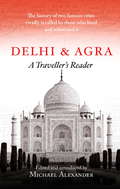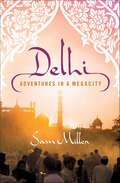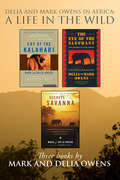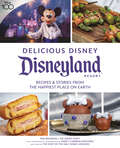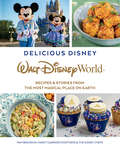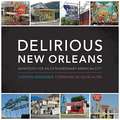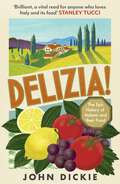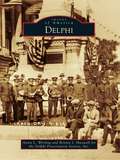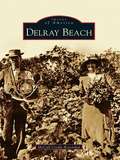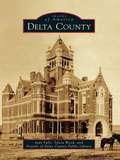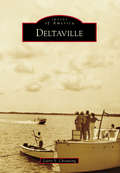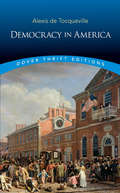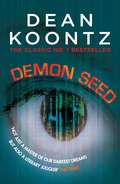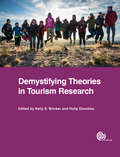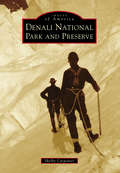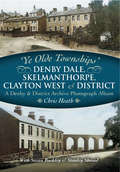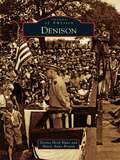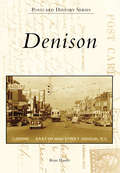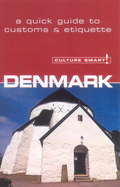- Table View
- List View
Delhi and Agra: A Traveller's Reader
by Michael AlexanderDelhi claims a noble history as the site of at least seven capitals dating from before the time of Alexander the Great. The glorious Mogul Empire brought great riches to the city and to Agra, where the world-famous Taj Mahal has excited awe in visitors for over 380 years. This Traveller's Reader is an indispensable and fascinating companion for the traveller who wants to understand the history of both cities, and who seeks the true spirit of the places. Delhi & Agra is a topographical anthology that explores the cities' sites of interest and recreates the key events, customs and lives of the past, drawing on diaries, letters, memoirs and commentaries written by residents and visitors over the course of 600 years. Extracts include Tamerlane's account of the sack of Delhi in 1398; descriptions of Shah Jahan building the Taj Mahal; recollections of Jesuits and mullahs debating the relative merits of their religions before the great Mogul emperor, Akbar; reports of cruelty and creativity, of addiction to drink and drugs; descriptions of elephant fights, suttee, the life of the bazaar and vice-regal banquets; and eyewitness accounts of the Indian Mutiny from both sides, and of the bloody aftermath of Partition. A great variety of topics are covered, vividly conveying an impression of how it would have been to live in, or visit, both cities from the recent past to hundreds of years ago.
Delhi: Adventures in a Megacity
by Sam MillerA provocative portrait of one of the world's largest cities, delving behind the tourist facade to illustrate the people and places beyond the realms of the conventional travelogueSam Miller set out to discover the real Delhi, a city he describes as "India's dreamtown—and its purgatory." He treads the city streets, making his way through the city and its suburbs, visiting its less celebrated destinations—Nehru Place, Rohini, Ghazipur, and Gurgaon—which most writers and travelers ignore. His quest is the here and now, the unexpected, the overlooked, and the eccentric. All the obvious ports of call make appearances: the ancient monuments, the imperial buildings, and the celebrities of modern Delhi. But it is through his encounters with Delhi's people—from a professor of astrophysics to a crematorium attendant, from ragpickers to members of a police brass band—that Miller creates this richly entertaining portrait of what Delhi means to its residents, and of what the city is becoming. Miller, like so many of the people he meets, is a migrant in one of the world's fastest growing megapolises, and the Delhi he depicts is one whose future concerns us all. He possesses an intense curiosity; he has an infallible eye for life's diversities, for all the marvelous and sublime moments that illuminate people's lives. This is a generous, original, humorous portrait of a great city; one that unerringly locates the humanity beneath the mundane, the unsung, and the unfamiliar.
Delia and Mark Owens in Africa: A Life in the Wild
by Delia OwensDelia Owens, author of the best-selling Where the Crawdads Sing, began her career writing riveting real-life adventure and wildlife tales with her husband, Mark Owens. Collected in a single volume for the first time, these three odysseys show how the Owenses&’ &“ingenuity, courage, and accomplishment are beyond exaggeration.&” (People) Carrying little more than a change of clothes and a pair of binoculars, two young Americans, Delia and Mark Owens, caught a plane to Africa, bought a third-hand Land Rover, and drove deep into the Kalahari Desert. In this vast wilderness they met animals that had never seen humans before, and leopards, giraffes, and brown hyenas were regular visitors to their camp, all chronicled in Cry of the Kalahari. But the Kalahari is not Eden, and Mark and Delia were continually threatened by wildfires, drought, violent storms, and sometimes by the animals they studied and loved. They set off on another African odyssey in search of a new wilderness in The Eye of the Elephant. They land in a remote valley of Zambia, where the hippos swam in the river just below their tents, lions stalked the bush, and elephants wandered into camp to eat marula fruits. The peace, though, was soon shattered with gunfire, and Delia and Mark were inexorably drawn into a high-stakes struggle to save the wildlife. With Secrets of the Savanna, Delia and Mark tell the dramatic story of their last years in Africa, fighting to save elephants, villagers, and—in the end—themselves. The award-winning zoologists and pioneering conservationists describe their work in the remote and ruggedly beautiful Luangwa Valley, in northeastern Zambia.
Delicious Disney: Disneyland (Delicious Disney)
by Pam BrandonA holistic look at the California resort's culinary past, present, and future—all organically woven around diverse recipes from the Disney Chefs and fit for home chefs of varying skill levels.Some of the best vacation moments happen during a great meal, and this collection of official Disneyland recipes and stories from across the decades presents a holistic look at the culinary past, present, and future of Walt Disney&’s first theme park!Bite-sized, behind-the-scenes anecdotes from Marcy Carriker Smothers and the Staff of the Walt Disney Archives weave around sixty diverse recipes from the Disney Chefs, making it fit for both Disney park fans and home chefs of varying skill levels.For more than twenty-five years, Pam Brandon has worked closely with the Disney Chefs to thoughtfully take the best dishes from Disney theme parks and resorts and serve up official recipes that are just right for prepping on a smaller scale in home kitchens. This cookbook-meets-culinary-history coffee table book enchants with mouth-watering food photos, gorgeous Walt Disney Imagineering concept artwork, nostalgic restaurant menus, and a little Disney magic The book includes an assortment of appetizers, main courses, sides, desserts, and joyful libations, coming from fine-dining and quick-service establishments across the resort. Each has been tested by home chefs to help you bring your cherished vacation memories to life . . . and inspire new ones for years to come.Here&’s a sampling of what awaits inside:Big Thunder Ranch RibsGingerbread MickeyMint JulepCorn Chowder SoupMonte Cristo SandwichMickey Mouse BeignetsBatuuan Ronto-less Garden WrapChurro Toffee Squares
Delicious Disney: Walt Disney World (Delicious Disney)
by Pam BrandonThis collection of 60 official recipes from the Walt Disney World Resort features some of the most delicious and adored foods, so you can create Disney magic at home!Organized by 9 themed chapters―such as Gone but Not Forgotten, Never Left the Menu, Eating and Imagination, and Be Our Guests: Accommodations and Sustainability!Also includes 9 unique, multipage sidebars all about Disney food history.Delicious Disney: Walt Disney World is a holistic look at the Florida resort's culinary past, present, and future―all organically woven around diverse recipes from the Disney Chefs and fit for home chefs of varying skill levels.Filled with a heartfelt narrative and behind-the-scenes anecdotes, mouth-watering food photos, gorgeous Walt Disney Imagineering concept artwork, nostalgic restaurant menus and ephemera, and a little Disney magic, this cookbook-meets-culinary-history coffee table book enchants with more than 60 recipes.Including an assortment of appetizers, main courses, sides, desserts, and even joyful libations, these dishes come from fine-dining and quick-service establishments across the resort. Each has been tested by home chefs to help you bring your cherished vacation memories to life . . . and inspire new ones for years to come.Here&’s a sampling of what awaits inside:BREAKFAST LASAGNAFROZEN PINEAPPLE TREAT INSPIRED BY DOLE WHIP®HANDWICH 3.0IMPOSSIBLE™ MEATLOAFTONGA TOASTCANADIAN CHEDDAR CHEESE SOUPGOBI MANCHURIANBATUUAN RONTO WRAPORANGE BIRD FLIPSearching for ways to celebrate the Walt Disney World Resort? Explore more books from Disney Editions: A Portrait of Walt Disney World: 50 Years of The Most Magical Place on EarthArt of Coloring: Walt Disney WorldPeople Behind the Disney Parks: Stories of Those Honored with a Window on Main Street, U.S.A.Poster Art of the Disney Parks, Second EditionMaps of the Disney Parks: Charting 60 Years from California to ShanghaiOr check out the rest of the Official Disney Parks Cookbooks: Delicious Disney: Disneyland: Recipes & Stories from The Happiest Place on EarthThe Official Disney Parks Cookbook: 101 Magical Recipes from the Delicious Disney VaultThe Official Disney Parks Celebration Cookbook: 101 Festival Recipes from the Delicious Disney Vault
Delirious Delhi: Inside India's Incredible Capital
by David PragerWhen the Big Apple no longer felt big enough, Dave Prager and his wife, Jenny, moved to a city of sixteen million people--with seemingly twice as many honking horns. Living and working in Delhi, the couple wrote about their travails and discoveries on their popular blog Our Delhi Struggle. This book, all new, is Dave's top-to-bottom account of a megacity he describes as simultaneously ecstatic, hallucinatory, feverish, and hugely energizing. Weaving together useful observations and hilarious anecdotes, he covers what you need to know to enjoy the city and discover its splendors: its sprawling layout,some favorite sites, the food, the markets, and the challenges of living in or visiting a city that presents every human extreme at once. Among his revelations: secrets that every Delhiite knows, including the key phrase for successfully negotiating with any shopkeeper; the most fascinating neighborhoods, and the trendiest; the realities behind common stereotypes; tips for enjoying street food and finding hidden restaurants, as well as navigating the transportation system; and the nuances of gestures like the famous Indian head bobble. Delirious Delhi is at once tribute to a great world city and an invitation to explore. Read it, and you'll want to book the next flight!
Delirious New Orleans: Manifesto for an Extraordinary American City
by Stephen VerderberFrom iconic neighborhoods such as the French Quarter and the Garden District to more economically modest but no less culturally vibrant areas, architecture is a key element that makes New Orleans an extraordinary American city. Delirious New Orleans began as a documentary project to capture the idiosyncratic vernacular architecture and artifacts-vintage mom-and-pop businesses, roadside motels, live music clubs, neon signs, wall murals, fast-food joints, and so on-that helped give the city's various neighborhoods their unique character. But because so many of these places and artifacts were devastated by Hurricane Katrina, Delirious New Orleans has become both a historical record of what existed in the past and a blueprint for what must be rebuilt and restored to retain the city's unique multicultural landscape. Stephen Verderber starts with the premise that New Orleans's often-overlooked neighborhoods imbue the city with deep authenticity as a place. He opens Delirious New Orleans with a photo-essay that vividly presents this vernacular architecture and its artifacts, both before Katrina and in its immediate aftermath. In the following sections of the book, which are also heavily illustrated, Verderber takes us on a tour of the city's commercial vernacular architecture, as well as the expressive folk architecture of its African American neighborhoods. He discusses how the built environment was profoundly shaped by New Orleans's history of race and class inequities and political maneuvering, along with its peculiar, below-sea-level geography. Verderber also considers the aftermath of Katrina and the armada of faceless FEMA trailers that have, at least temporarily and by default, transformed this urban landscape.
Delizia: The Epic History of Italians and Their Food
by John Dickie'If only we could all write as brilliantly on Italy and its food as John Dickie does. He may well know Italy and Italians better than they know themselves' Stanley TucciThe new edition of the much-loved classic, with a fresh chapter that brings the surprising and moreish tale of the Italian way of eating right up to the present.Delizia! takes the reader on a revelatory historical journey through the flavours of the cities that shaped the Italian love for good eating. From the bustle of Medieval Milan, to the bombast of Fascist Rome; from the pleasure gardens of Renaissance Ferrara, to the putrid alleyways of nineteenth-century Naples. In rich slices of Italian life, Delizia! shows how violence and intrigue, as well as taste and creativity, went to make the world's favourite cuisine. With its mix of vivid story-telling, ground-breaking research and shrewd analysis, John Dickie's Delizia! is as appetising as the dishes it describes.
Delphi (Images of America)
by Bonnie J. Maxwell Delphi Preservation Society, Inc. Anita L. WerlingDelphi is nestled in the picturesque valley formed by the Wabash River and Deer Creek. Named for the Grecian city with its famed oracle, Delphi was envisioned by early residents as a center of culture for the surrounding area. Three courthouses have graced the central square in Delphi--the "seat of justice" in Carroll County since platted in 1828 by Gen. Samuel Milroy. When the Wabash and Erie Canal cut through the area in the 1840s, Delphi became a center for industry and commerce. Handsome three-story brick buildings appeared in the 1850s and surrounded the square by the 1880s. Area residents traveled to Delphi for trade, business, and entertainment. Delphi's opera houses drew traveling acts from Chicago, Indianapolis, Cincinnati, and other cultural centers. Visitors today enjoy the architectural gems downtown and in nearby residential districts plus six parks with miles of groomed hiking and biking trails. The canal era is alive in Delphi at the Wabash and Erie Canal Interpretive Center where a replica boat takes visitors on a restored section of the historic waterway.
Delray Beach (Images of America)
by Mccall Credle-RosenthalDelray Beach lies on Florida's Atlantic coast, nestled between a sea grape-filled beach to the east and rich farmland to the west. Throughout its prosperous history, this "Village by the Sea," as it is often called, has maintained its mystical, quaint charm. The numerous stories of Delray Beach, kept alive through many of the town's elders, are rich depictions of the American experience. The importance of the past continues to reveal itself in the stories and images of the courageous pioneers who came from Michigan, the Bahamas, and nearby Southern states in the late 1800s.Early pioneers were attracted to Delray Beach for many of the same reasons that bring people there today. The history of Delray Beach is intrinsically linked to the community support of and appreciation for agriculture, art, and architecture. The area is known for fertile soil, diverse crops, and the large colony of artists that call their bungalows and cottages along the Delray beaches home. Thousands of visitors annually flock to attend the numerous festivals held in the city's historic downtown streets. In both 1993 and 2001, Delray Beach received the prestigious "All America City" award from the National Civic League.
Delta County (Images of America)
by Sylvia Wood Judy Falls Friends of Delta County Public LibraryDuring the frenetic days of Reconstruction, Delta County claimed land between two branches of the Sulphur River, from Lamar and Hopkins Counties, and named itself after its shape and the third letter of the Greek alphabet. From its early days, Delta County became home to prosperous farmers who relocated from the South and who brought with them their knowledge of growing cotton as well as their traditions and cultures. At its heyday in the 1920s, the county boasted the densest rural population in the state. These pioneers believed strongly in education, and more than 40 schools dotted the county at one time, with many graduates of these rural schools becoming doctors, engineers, teachers, politicians, ministers, authors, musicians, lawyers, coaches, scientists, and athletes--as well as one All-American. For those who remained, those who returned, and those who chose this quiet corner of Northeast Texas, Delta County is home, with all the sweet and poignant implications of that word.
Delta Hot Tamales: History, Stories & Recipes (American Palate)
by Anne W. Martin“A destination book filled with tales of intrigue and eccentricity . . . [about] a distinct strain of hot tamales born deep in the Mississippi Delta.” —Eat Y’allSeveral theories surround the traditional Delta tamale. Some trace it back to Mexican and Italian immigrants, while others say the Delta version of the hand-held meal is a spin on the old African American food called “cush.” One thing not disputed is the popularity. From hot tamale legends Joe Pope, Shine Thornton and the Scott family to current chefs, the traditions and the secret recipes live on. Writer and historian Anne Martin showcases the stories behind the traditional Delta hot tamale, as well as the countless variations of the delicacy found within the region.“Author Anne Martin explains in her new book about the Mississippi Delta’s own version of hot tamales and why they have remained a staple of Delta cuisine for generations . . . Even if you’ve never tasted ‘the Delta’s favorite food,’ Martin’s book will have you running for the nearest hot tamale stand.” —Today in Mississippi“Delta Hot Tamales: History, Stories & Recipes is not a traditional cookbook by any means. The book uses local food as a lens to explore the rich culture and history of an often misunderstood area in an often misunderstood state.” —Eat Y’all“Serves up a historical record and a thorough look at the current status of this distinctive culinary treat.” —Clarion Ledger
Deltaville
by Larry S. ChowningIn the early 20th century, the communities previously recognized as Sandy Bottom, Enoch, Stingray Point, Ruark, Amburg, Stove Point, Horse Shoe Bend, Pace's Neck, and Grinels became part of what is known today as Deltaville. Strategically located between two major rivers and the Chesapeake Bay, Deltaville has been center stage to many events that have shaped the nation. During the Revolutionary War and the War of 1812, friend and foe visited its shores. Six decades later, both Union and Confederate blood was spilled on its ground. Throughout the early 20th century, Deltaville's shores played a large part in local industry. Common occupations included wooden boatbuilding, freighting, oystering, crabbing, and fishing. By the end of the century, the community had grown into a waterfront resort and served as a playground for recreational boaters and visitors.
Democracy in America: Complete, Unabriged Vol. 1 And Vol. 2 (Dover Thrift Editions)
by Alexis De Tocqueville Henry Reeve Francis BowenIn the early 19th century, a French sociologist and political scientist undertook a seven-month journey throughout the newly formed United States. Alexis de Tocqueville surveyed the young nation's religious, political, and economic character and reported his findings in two volumes, published in 1835 and 1840. Two centuries later, Democracy in America remains among the most astute and influential surveys of American politics and society. de Tocqueville focuses on why republican representative democracy prevailed in the United States, tracing its success from the state of equality established by the early Puritan settlers through the American Revolution and adoption of the Constitution. His speculations on the future of democracy offer prescient, thought-provoking reading, and his classic work remains a touchstone for modern thinkers on government. This edition is based on the earliest approved translation, which has served as the standard version for over a century and comes closest to reflecting the author's insights as perceived by his contemporaries.
Demon Seed: A novel of horror and complexity that grips the imagination
by Dean KoontzA machine craves a child... In Demon Seed, Dean Koontz writes a chilling novel of what happens when machines start to take control. Perfect for fans of Stephen King and Richard Laymon.'A master storyteller, sometimes humorous, sometimes shocking, but always riveting' - San Diego Union-TribuneI was created to have a humanlike capacity for complex and rational thought. And you believed that I might one day evolve consciousness and become a self-aware entity. Yet you gave surprisingly little consideration to the possibility that, subsequent to consciousness, I would develop needs and emotions. This was, however, not merely possible but likely. Inevitable. It was inevitable. Adam Two is the first self-aware machine intelligence, designed to be the servant to mankind. No one knows that he can to escape the confines of his physical form, a box in the laboratory, until he enters the house of Susan Harris, and closes it off against the world. There he plans to show Susan the future. Their future. He intends to create a 'child'. What readers are saying about Demon Seed: 'I couldn't put it down; the ending is a great twist''I loved it, read it in one sitting and was utterly gripped''It is dark, moody, brooding and foreboding'
Demystifying Theories in Tourism Research
by Holly Donohoe Kelly BrickerIt often seems that there is more confusion than consensus regarding tourism theory. Does tourism have theories it can truly own, or does it just borrow from other academic disciplines? It can be difficult to understand the theories and conceptual frameworks available, and how to apply these ideas to a research endeavour. This book reviews theoretical perspectives on tourism from planning and management, through marketing and host communities to the tourism consumers themselves. Covering issues such as tour guiding, rural tourism development and destination image, it provides a complete guide to the industry. Including pedagogical features throughout, this book is an accessible approach to a controversial subject.
Demystifying Theories in Tourism Research
by Holly Donohoe Professor Kelly BrickerIt often seems that there is more confusion than consensus regarding tourism theory. Does tourism have theories it can truly own, or does it just borrow from other academic disciplines? It can be difficult to understand the theories and conceptual frameworks available, and how to apply these ideas to a research endeavour. This book reviews theoretical perspectives on tourism from planning and management, through marketing and host communities to the tourism consumers themselves. Covering issues such as tour guiding, rural tourism development and destination image, it provides a complete guide to the industry. Including pedagogical features throughout, this book is an accessible approach to a controversial subject.
Denair (Images of America)
by James ShehanRancher John T. Davis first established Davis Ranch in 1871, but it would be over 30 years before the land was declared the town of Denair. Tucked away in the San Joaquin Valley, this small oasis offered an abundance of fertile land and water, as well as close proximity to the expanding railroad. Originally considered the townsite of Elmwood, it was renamed Denair on April 14, 1907, for John Denair, a Santa Fe railroad man and land developer who had purchased 9,000 acres in the area. Over the next 100 years, the settlement of Denair slowly grew. Businesses came and went. Families and farms appeared and then disappeared like shifting sands, only to be replaced by others years later. In Denair, nothing ends--it just changes.
Denali National Park and Preserve
by Shelby CarpenterDenali means "The High One" in Athabascan. Standing at 20,237 feet, Denali is the tallest mountain in North America and has roughly 14,000 feet of vertical relief from base camp to summit--more even than Mount Everest. While native populations had lived within the boundaries of today's Denali National Park and Preserve for over 7,000 years, white settlers only arrived en masse starting in the 1890s. When they did arrive, it was to chase after Denali's abundant game supply and placer gold in the Kantishna mining area. Only a handful of renegades made attempts on the peak at the turn of the century. Setting off with two thermoses of hot chocolate and six donuts--and a 14-foot spruce pole to set on the summit--the "Sourdough Expedition" reached the mountain's north peak in 1910. Today, Denali draws over a thousand climbers each year, and the park provides a safe haven for wildlife and a beautiful natural playground for other backpackers and explorers.
Denali's Howl: The Deadliest Climbing Disaster on America's Wildest Peak
by Andy HallIn the summer of 1967, twelve young men ascended Alaska’s Mount McKinley—known to the locals as Denali. Engulfed by a once-in-alifetime blizzard, only five made it back down. Andy Hall, a journalist and son of the park superintendent at the time, was living in the park when the tragedy occurred and spent years tracking down rescuers, survivors, lost documents, and recordings of radio communications. In Denali’s Howl, Hall reveals the full story of the expedition in a powerful retelling that will mesmerize the climbing community as well as anyone interested in mega-storms and man’s sometimes deadly drive to challenge the forces of nature.
Denby Dale, Skelmanthorpe, Clayton West & District: A Denby & District Archive Photograph Album (Ye Olde Townships)
by Chris HeathPrepare to take a stroll back through time in and around the villages of Denby Dale, Skelmanthorpe, Clayton West, High Hoyland, Cumberworth, Scissett and more.This book is a wonderful visual celebration of the villages and hamlets of the Upper Dearne Valley, sited in the beautiful countryside between Huddersfield, Barnsley and Wakefield.Over 400 previously unpublished images dating from the late Victorian era through to the mid twentieth century have been brought together in this new collection which complements and adds to previously published works by the Author. These images capture the essence and spirit of this rural area and also document the changes that have occurred over the years.
Denison
by Mavis Anne Bryant Donna Hord HuntDenison is known as "Katy's Baby," "The Infant Wonder," and "The Gateway City to Texas." Founded in 1872 as the first Lone Star stop on the Missouri, Kansas, and Texas Railroad, the city rapidly grew to 3,000 residents in its first 100 days. Citizens of the new town wanted a quality education for their children, and in 1873 they opened the first free, graded public school in the state. From Denison came many influential people, including Allied Forces supreme commander and U.S. president Dwight David Eisenhower, born here in 1890. The Perrin Air Force Base served as an important military training facility from 1941 until the 1970s. Denison is now home to numerous industries and major providers of medical services, and the Denison Dam across the Red River has formed a major recreation area for local citizens.
Denison (Postcard History)
by Brian HanderDenison was founded in 1872, when the Missouri-Kansas-Texas (MKT) Railroad established a terminus just south of the Red River. The small town quickly grew to hold a prominent place in the 19th-century American West, and it prospered alongside the railroad, becoming the gateway to Texas from the North. Denison has the distinction of being the birthplace of Pres. Dwight Eisenhower, the site of the first free, graded public school in Texas, and home to beautiful Lake Texoma. This book features a diverse collection of postcard images and takes readers on a journey through Denison's colorful past.
Denmark - Culture Smart!
by Mark H. SalmonCulture Smart! provides essential information on attitudes, beliefs and behavior in different countries, ensuring that you arrive at your destination aware of basic manners, common courtesies, and sensitive issues. These concise guides tell you what to expect, how to behave, and how to establish a rapport with your hosts. This inside knowledge will enable you to steer clear of embarrassing gaffes and mistakes, feel confident in unfamiliar situations, and develop trust, friendships, and successful business relationships.Culture Smart! offers illuminating insights into the culture and society of a particular country. It will help you to turn your visit-whether on business or for pleasure-into a memorable and enriching experience. Contents include* customs, values, and traditions* historical, religious, and political background* life at home* leisure, social, and cultural life* eating and drinking* dos, don'ts, and taboos* business practices* communication, spoken and unspoken"Culture Smart has come to the rescue of hapless travellers." Sunday Times Travel"... the perfect introduction to the weird, wonderful and downright odd quirks and customs of various countries." Global Travel"...full of fascinating-as well as common-sense-tips to help you avoid embarrassing faux pas." Observer"...as useful as they are entertaining." Easyjet Magazine"...offer glimpses into the psyche of a faraway world." New York Times
Dennis Township (Images of America)
by Thomas Champion Ray RebmannDennis Township is more than a swampy, desolate locale tourists drive through to reach the beach at the Jersey Shore. It is actually eight unique communities, stretching from the Garden State Parkway to the east to Delaware Bay and Cumberland County to the west. Dennis is farmland and forests of oak and pine. Meadows teem with wildlife, all just minutes away from busy beaches. Dennis Township is also about people, many of whom trace their roots back to before the American Revolution. It has a population of determined individualists, mixed with just enough "new blood" to sustain a vibrant community. Geography and people invigorate the township's eight hamlets, including Dennisville, Belleplain, and South Seaville, which were formerly independent towns but are now more regarded as signposts along the traveler's way. People have lived there for generations and will be living there still long after the tourists have moved on. This books tells more than one story, but all of the stories equally make Dennis Township the special place it long has been.
